Where to Eat Now: An Insider’s Guide to the Best Canary Island Food
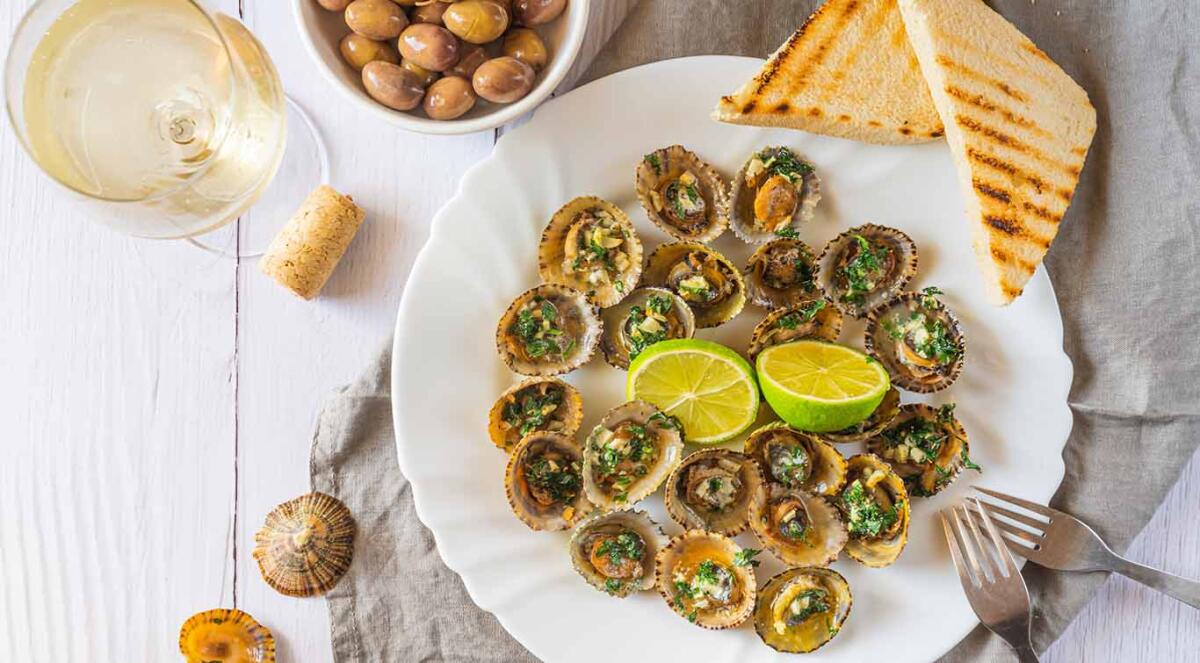
- Share via
The Canary Islands, a Spanish archipelago basking in the vastness of the Atlantic, are a world-renowned haven of breathtaking volcanic landscapes and perpetual sunshine.
But beyond the idyllic scenery lies a vibrant and diverse local cuisine, a captivating melting pot of Spanish, Latin America, and North Africa flavors. This is the definitive guide to the best restaurants and culinary delights the islands have to offer, from fine dining to traditional tapas bars.

The essence of Canary Island food lies in its reliance on fresh, locally sourced ingredients. The surrounding waters teem with fish, while the fertile soil yields a bounty of produce, from sweet potatoes to tomatoes. The use of olive oil is fundamental, and the Canary Island gastronomy is a story told through its unique local recipes and traditional dishes.

Tenerife: A Hub of Tradition and Innovation
Tenerife offers a dynamic dining landscape where you can find everything from a delicious meal in a rustic tavern to a Michelin-starred experience.
For Innovative Dining
- M.B. (The Ritz-Carlton, Abama): For true fine dining, this two-Michelin-star restaurant by chef Erlantz Gorostiza offers an avant-garde interpretation of Basque and Canarian cuisine. It’s an unforgettable experience for a special occasion.
- Noi: This spot presents an ever-changing daily menu where each dish is a cultural exploration. The staff’s explanations of locally sourced ingredients highlight the quality that defines modern Canarian dishes.
- Nucoconú: Located in Santa Cruz, this restaurant brings a vibrant Asian-inspired flair, emphasizing fresh and quality ingredients with an international twist in their aged meat and colorful bao buns.
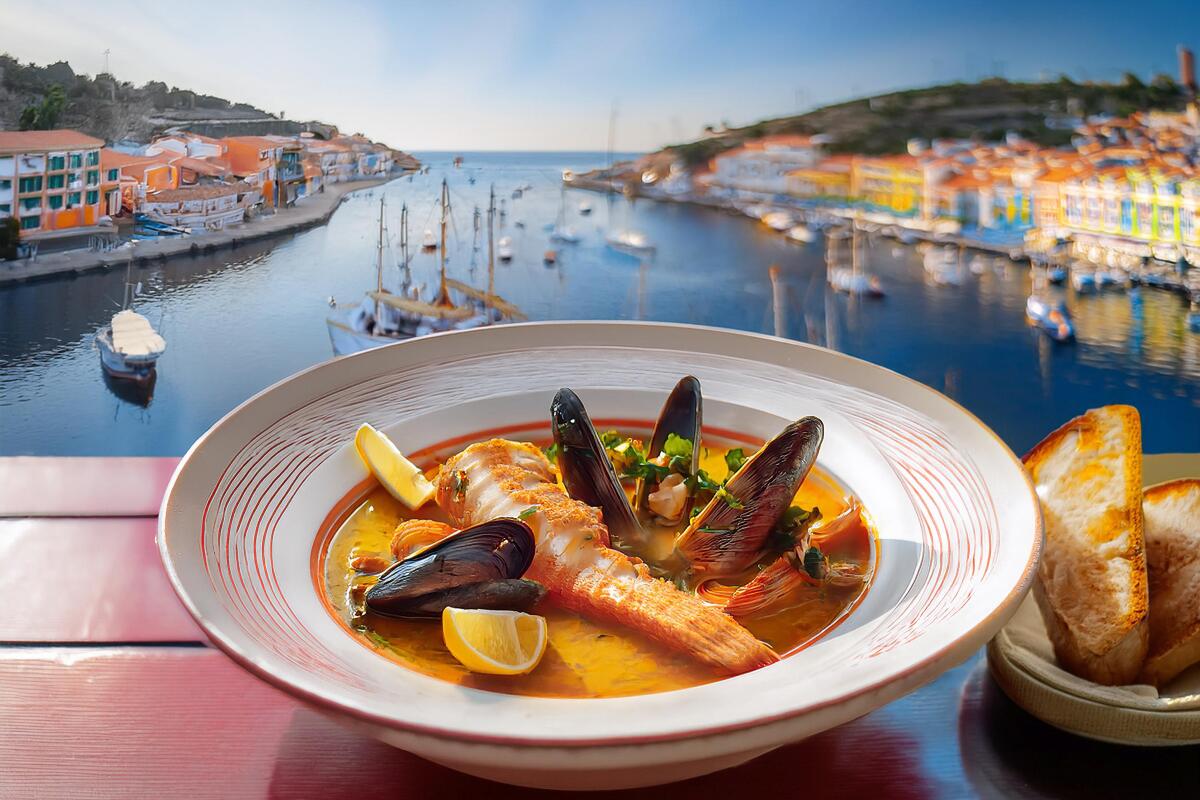
For Traditional Food:
- Guachinche El Talegazo: For an authentic outdoor dining setting, this is the place. Savor grilled meat dishes and Canarian cheese while trying a variety of typical dishes, including an array of papas arrugadas and croquettes, enjoyed with homemade local wine.
- Bodeguita Del Medio: This cozy tapas bar focuses on the sheer quality of its ingredients. Simple plates of Iberian ham, semi-cured cheese, and marinated olives showcase the foundational flavors of Canarian cuisine.
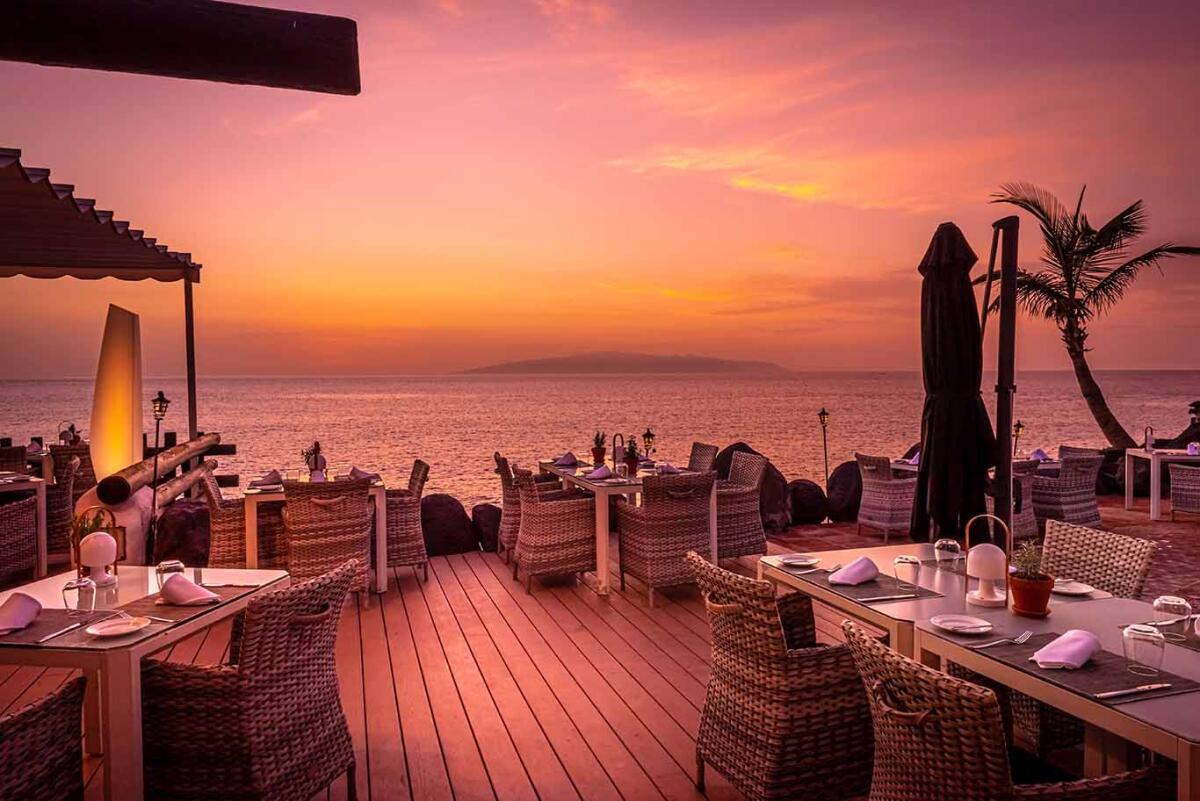
Gran Canaria: The Culinary Epicenter
While each island has specialties, Gran Canaria stands out as a culinary epicenter. Its capital, Las Palmas, is a food lover’s paradise. It is here, where almond trees flourish, that one can truly appreciate the depth of Canarian food.
- Tabaiba: A one-Michelin-star restaurant in Las Palmas, Tabaiba offers a creative tasting menu that reinterprets the archipelago’s historical recipes and showcases the best of local produce.
- Bodegón Vandama: Set in the beautiful wine country, this restaurant is perfect for trying traditional recipes like ropa vieja canaria and other hearty stews, all paired with excellent local wines.
- Mercado del Puerto: For a casual tour of local cuisine, this bustling market offers numerous stalls serving fresh seafood and tapas, including grilled cheese and delicious ham croquettes.

Fuerteventura & Lanzarote: Volcanic Terroir and Ocean Bounty
These eastern islands offer unique culinary experiences shaped by their arid landscapes and rich fishing grounds.
Fuerteventura
- Casa Santa María (Betancuria): Set in a beautifully restored farmhouse, this restaurant is famous for its modern take on traditional food, especially its tender carne de cabra (goat meat stew).
- La Marisma (El Cotillo): As a top choice among seafood restaurants, La Marisma serves incredibly fresh, simply prepared fish and seafood with stunning ocean views. It’s the perfect place to try local sea bass or dried fish (jareas).
- Donde Gilda: Famous for its creative tapas, this is a great place to sample Queso Majorero, the island’s renowned goat cheese made from local goat’s milk, which has a distinct flavor.
Lanzarote
- El Risco (Famara): With spectacular views of the Famara cliffs, this restaurant is celebrated for its exquisite seafood and rice dishes, showcasing the best of the Atlantic’s bounty.
- La Cascada del Puerto (Puerto del Carmen): A fantastic spot for trying high-quality grilled meats and a wide selection of tapas in a lively atmosphere.
- Bodega de Santiago (Yaiza): For a taste of history, this restaurant serves classic Canarian dishes made with care, offering a cozy and traditional dining experience.

La Palma, La Gomera & El Hierro: The Flavors of the Western Isles
These smaller, verdant islands offer a glimpse into the deep-rooted culinary traditions of the Canaries.
La Palma
Known as “La Isla Bonita,” its cuisine is rich with rustic charm. Restaurants like Chipi-Chipi are famous for grilled meats cooked over open fires and classic sides. It’s a great place to try the local “papas arrugadas con mojo”.
La Gomera
This island is the home of the famous watercress soup (potaje de berros), a nourishing hearty soup. Visit Restaurant La Montaña - Casa Efigenia for a unique vegetarian experience based entirely on organic ingredients from its own garden.
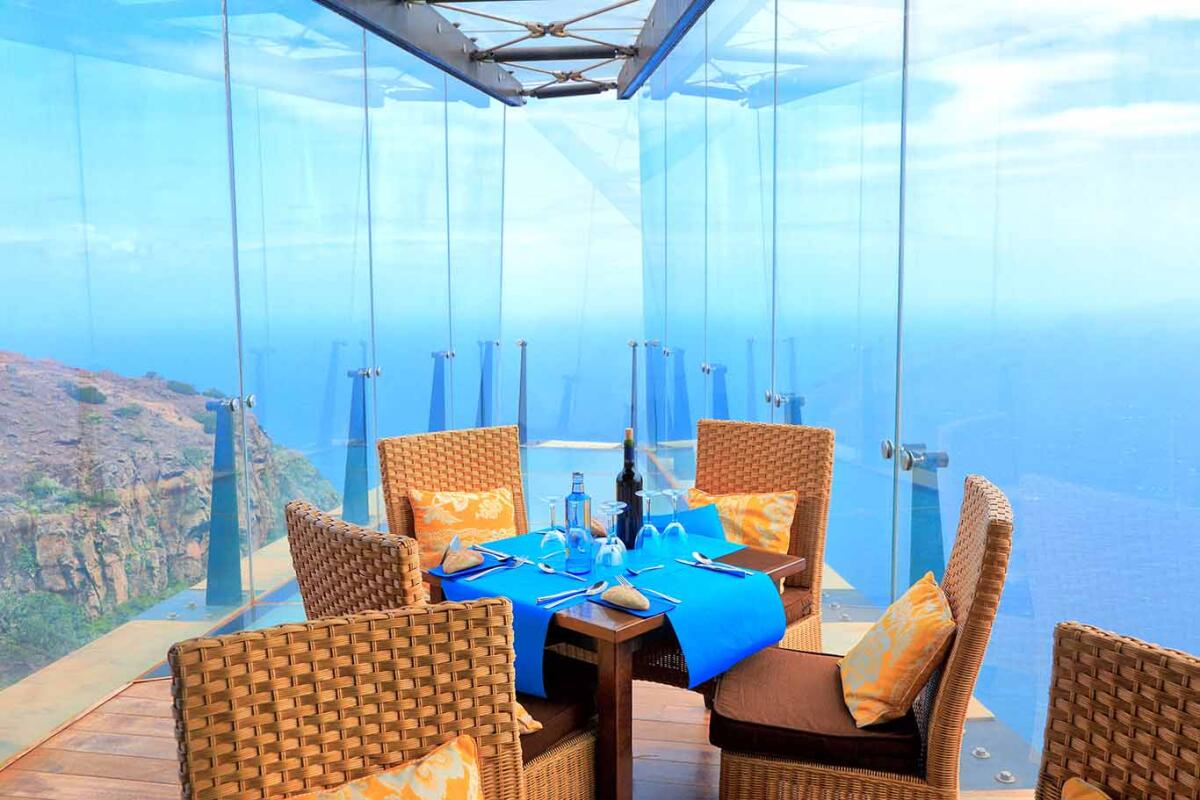
El Hierro
The smallest island has a proud culinary identity. At Restaurant Mirador de La Peña, you can enjoy fresh seafood and local specialties while taking in breathtaking panoramic views from a building designed by César Manrique.
Best Local Dishes: What to Eat
When exploring Canary Islands restaurants, these are the best local dishes you must try.
Papas Arrugadas con Mojo
The absolute signature dish of the islands. These “wrinkly potatoes” are small, local boiled potatoes cooked in heavily salted water. They are the perfect vehicle for the islands’ famous mojo sauce.
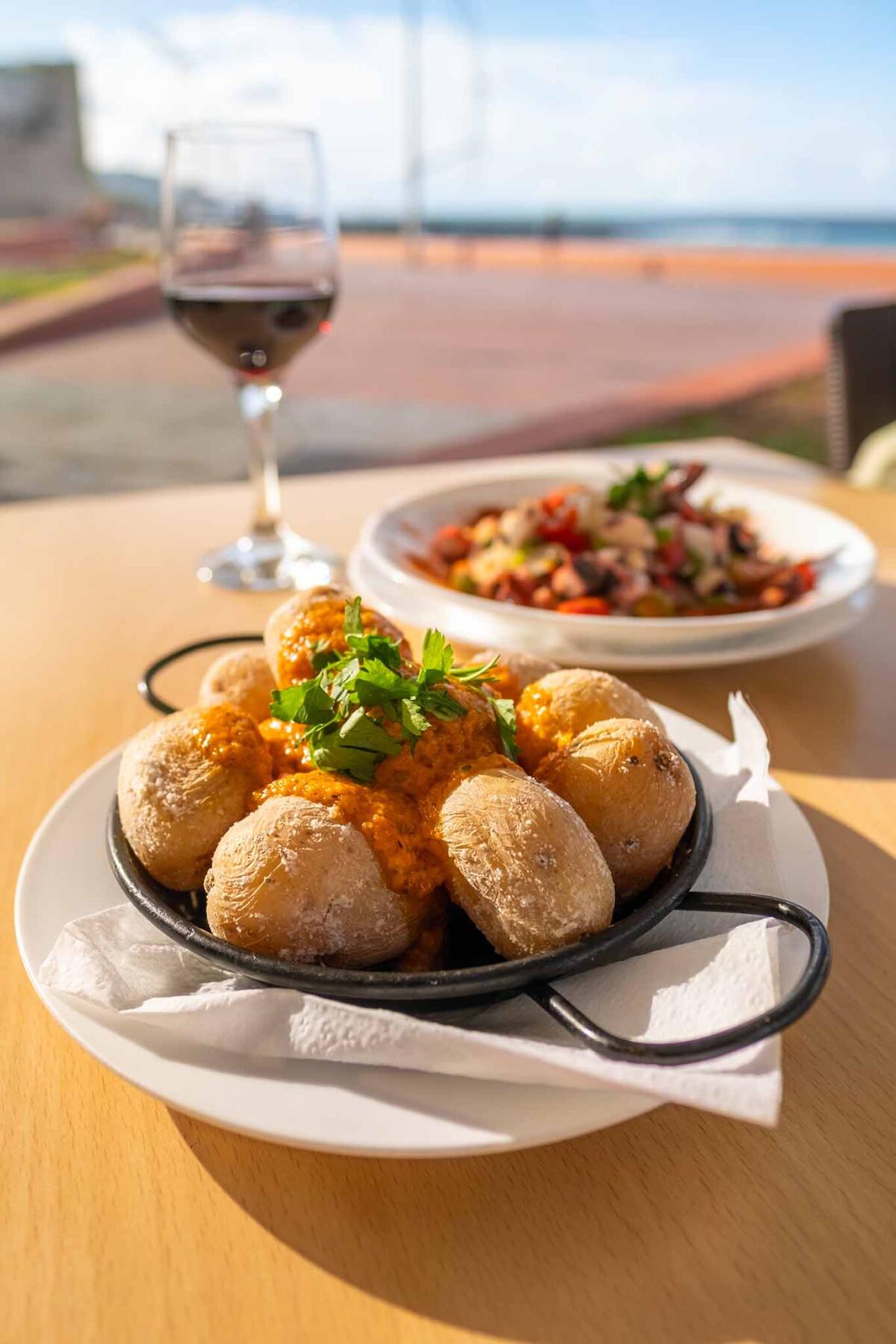
There are two main types: Mojo Rojo, the red, spicy sauce made with red peppers, cumin, and garlic, which has a robust flavor perfect for meat, and Mojo Verde, a milder green sauce made with cilantro, parsley, and green peppers, that is traditionally eaten with fish. Cool your palate with a chilled glass of Canarian white wine.
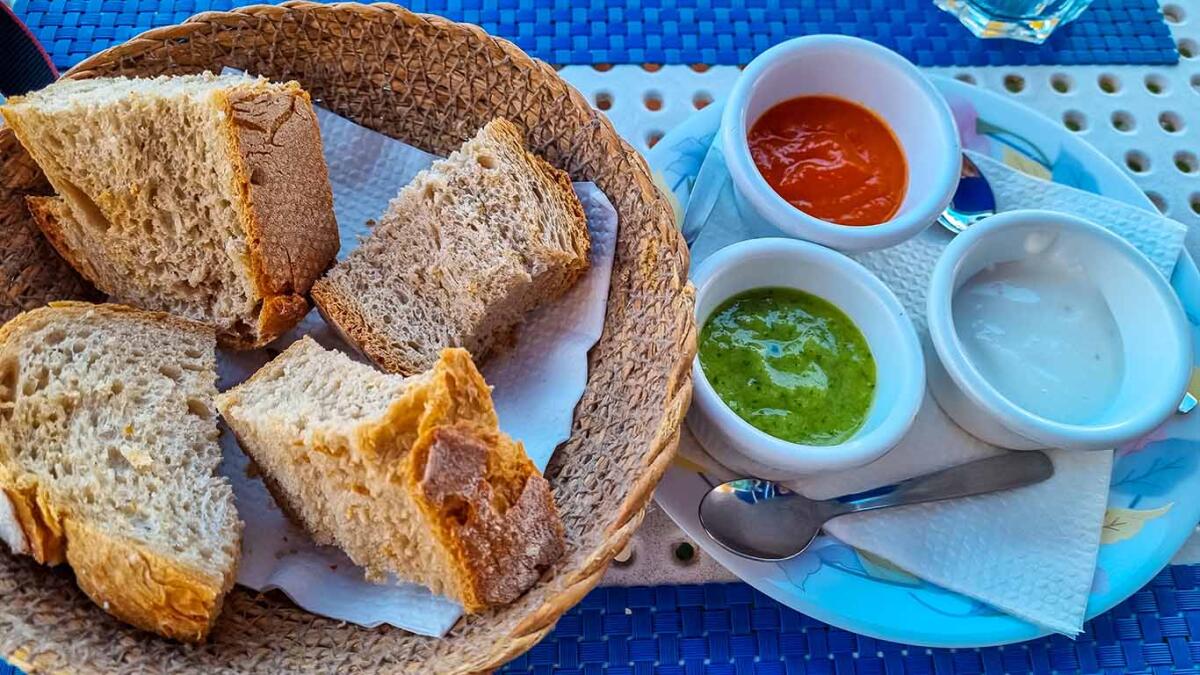
Ropa Vieja Canaria
This hearty stew, whose name translates to “old clothes,” has origins in mainland Spain and a strong connection to Latin America. The local version, ropa vieja canaria, is a delicious meal made with shredded beef or chicken, garbanzo beans, and vegetables like onions and bell peppers.

Carne de Cabra
Goat meat is a beloved rustic delicacy. The most common preparation is a stew where the meat is slow-cooked with garlic, onions, tomatoes, and herbs like bay leaves and thyme, resulting in tender, flavorful meat that falls off the bone.

Queso Asado con Mojo
A simple, savory pleasure. This dish features local goat cheese grilled to perfection, with a golden crust and a gooey interior, served with a drizzle of mojo.

De La: From the Land
The phrase “de la” (from the) often precedes the main ingredient in a dish’s name, emphasizing its origin and freshness. This is particularly true for dishes that celebrate the local produce and livestock of the islands.
Caldo de...
The term caldo de simply means “broth of,” and it precedes many beloved soups. Caldo de Papas is a humble and heartwarming potato soup, typically made with potatoes, onions, cilantro, and often enriched with a poached egg yolk and a touch of lemon zest. Caldo de Pescado is a cherished fish broth made with fresh local fish, a true taste of the Atlantic.
Gofio
One cannot speak of Canarian cuisine without mentioning this ancient foodstuff, a legacy of the pre-Hispanic inhabitants. A flour made from toasted cereals or roasted grains, it can be mixed with broth to create a thick porridge called escaldón.
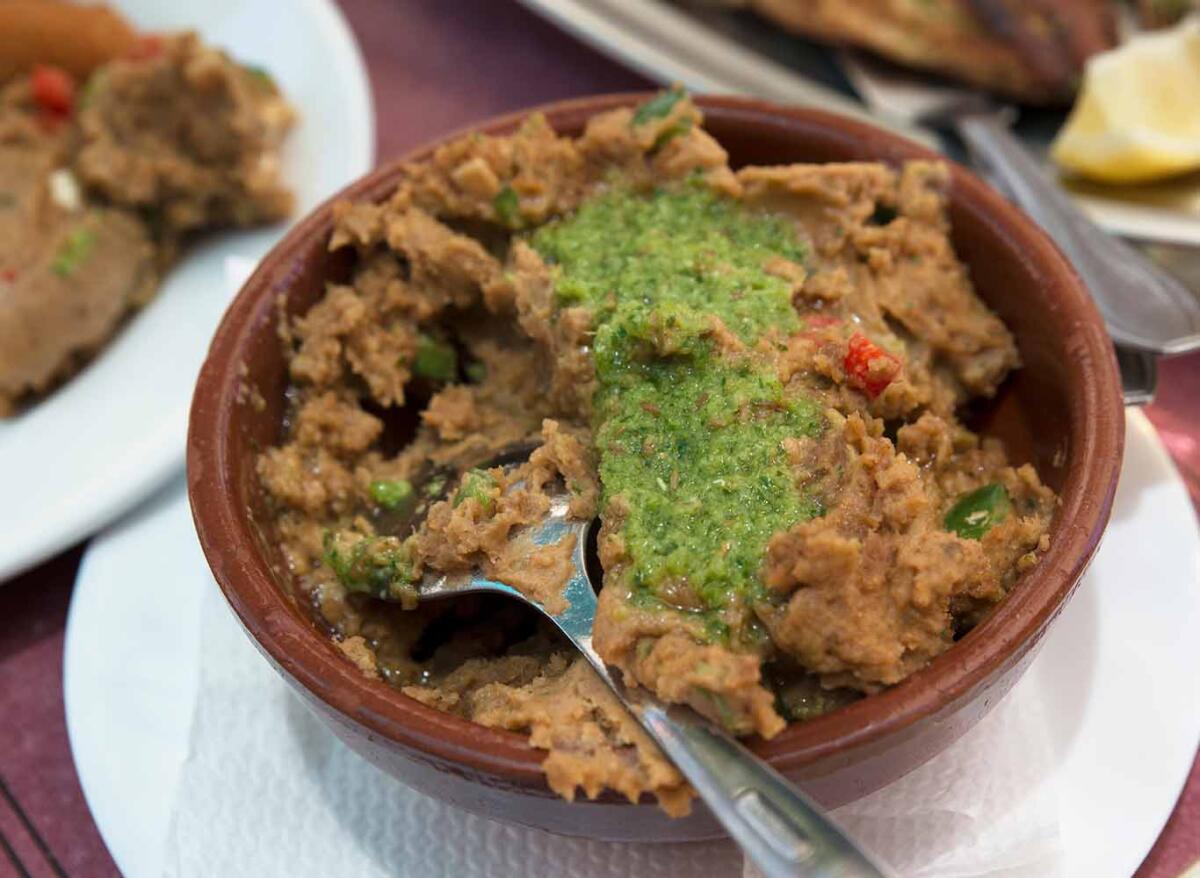
Traditional Canarian Sweet Treats
Desserts often feature local ingredients. Bienmesabe, meaning it “tastes good,” is a famous sweet made with ground almonds, honey, egg yolk, and sugar syrup. Another popular ingredient in sweet treats is condensed milk.

A Delicious Conclusion to Canarian Dishes
From the Michelin-starred restaurants of Tenerife to the traditional guachinches nestled in the hills, it’s clear the Canary Islands offer a culinary scene as diverse and captivating as their volcanic landscapes.
This guide has navigated you through the must-visit eateries across the archipelago, highlighting where to find everything from the freshest seafood in Lanzarote to the most authentic carne de cabra in Fuerteventura.
Whether you’re dipping salty papas arrugadas into fiery mojo rojo for the first time or discovering the rich heritage in a bowl of ropa vieja canaria, you are tasting the islands’ unique history—a melting pot of Spanish, African, and Latin American influences.
So when you visit, venture beyond the sun loungers and follow the aromas from bustling market stalls and cozy village kitchens. Exploring the rich and varied Canary Island food is more than just dining; it’s an essential, delicious journey into the true soul of the archipelago.










